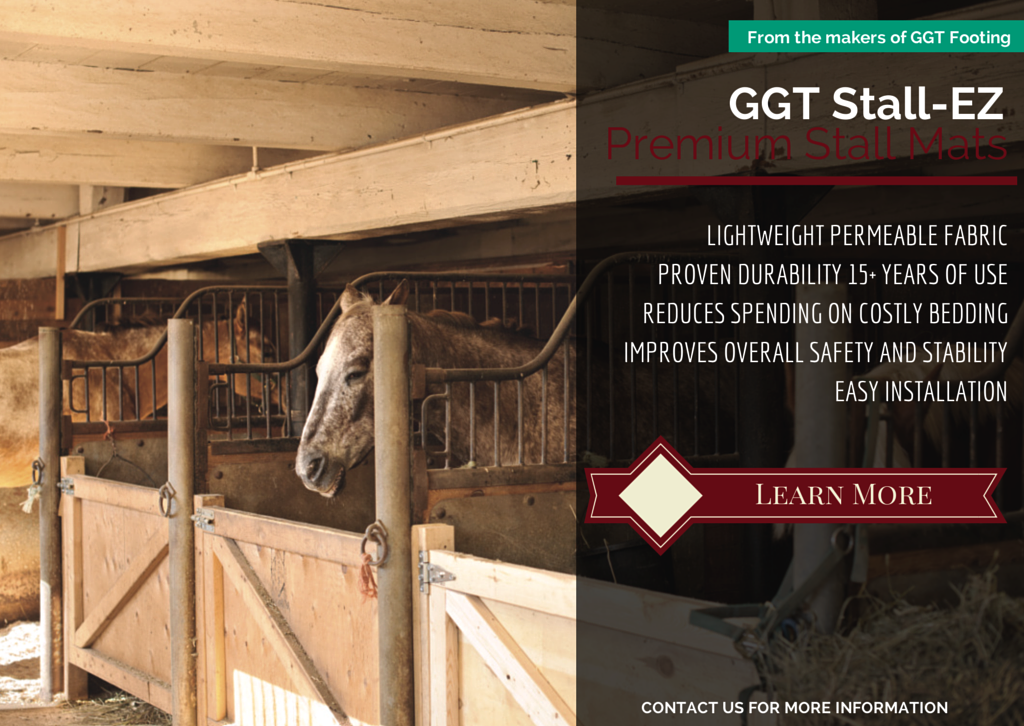An arena's footing is critical, whether used for shows, training or recreation. Determining the best footing for an arena is not always an easy task. Here are five things to consider when planning arena footing:

1. Plan Your Design
Planning your arena's design is an important first step in determining the best footing for your facility. If you plan on jumping horses or holding driving competitions, you will need more space. If you are constructing the building for horse shows, then you might consider extra space to allow for warm ups or to meet requirements of certain show sanctions.
2. Consider Location
Before construction begins on your arena, take a hard look at the proposed site. Ensure that it is level enough for the primary riding activities, yet has enough slope to allow for water runoff to aid in providing adequate footing. It can be helpful to dig a four-foot hole at our proposed site to learn about the soil profile.
3. Build a Strong Foundation
Ideally, your foundation should include a sub-base of whatever soil already exists on the site and a base, most often made up of crushed or compacted stone. The base should provide a solid, non-shifting, non-slippery surface. Your design will determine the depth of your base. Heavy use will need a deeper base than one used almost exclusively for dressage. Consider using geotextiles, synthetic materials of varying thicknesses, between sub-base and base.
4. Find Your Footing
Go back again to your design and remind yourself of its primary usage. Also, good footing should not be dusty or carry an odor.To stay within budget, consider footing materials readily available in your area. The experts as East West are happy to conduct a FREE consultation to discuss your footing needs.
5. Maintenance
Your type of footing, as well as your location, will determine necessary maintenance, which may include routine watering, dragging, or applying dust-reducing agents, among other tasks. Nip problems in the bud by quickly repairing any ruts or holes to avoid further damage. Remember to maintain the surrounding area as well and keep any drainage ditches free of obstructions.


